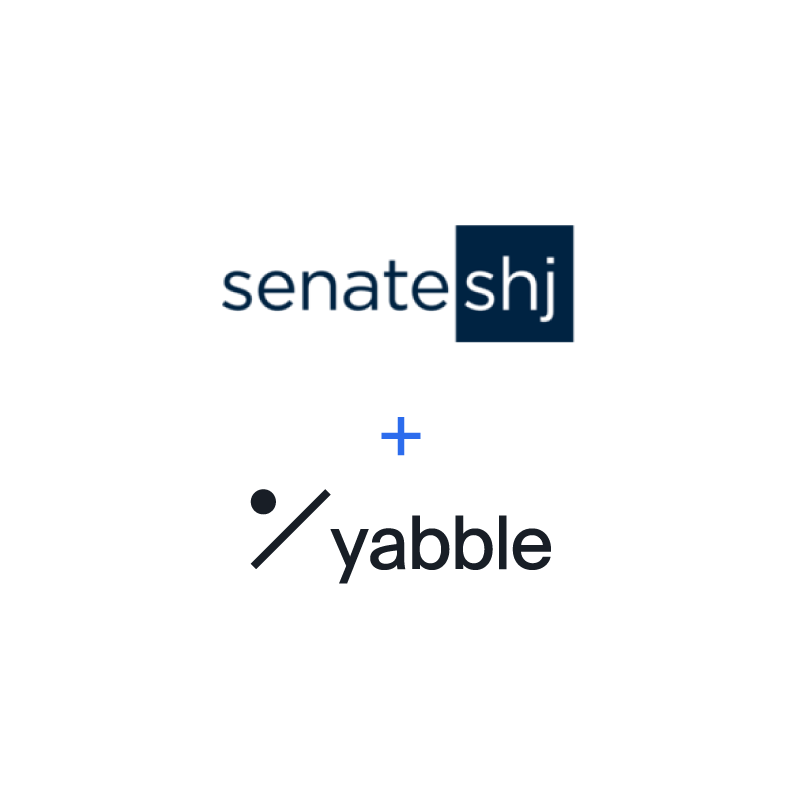
Saving time and maximizing productivity at SenateSHJ, one of Australasia’s leading communications consultancies
The challenge
SenateSHJ works with a wide range of clients from government and healthcare to media and marketing — each of whom has unique and complex insights needs. The team needed a way to minimize manual coding time in their research program so they could spend those hours driving success for their clients and the SenateSHJ business.
The Yabble factor
By letting Yabble do the heavy lifting on the thousands of open-ended responses they receive on any given survey, the SenateSHJ team has virtually eliminated manual coding — saving considerable costs and up to eight hours on every project. Now, they have more time to spend actioning insights rather than processing.
Founded in 2002, SenateSHJ is a top independent consultancy working with clients across Australasia. As one of the region’s leading communications agencies, they serve a wide range of clients in industries from government and healthcare to media and marketing — each of whom has unique and complex insights needs.
Even for a research team of highly qualified and experienced experts, managing an insights program that covers such a vast array of clients is a tall order. So the SenateSHJ team turned to Yabble.
No more wasted time: maximizing productivity with the Yabble platform
“Our main challenge was the fact that making sense of and processing unstructured data is time-consuming,” says SenateSHJ Head of Research Paul Di Marzio. “When we conduct a survey with open-ended questions, sometimes we get thousands of responses, and coding takes time. Yabble does this for us.”
This time-saving capability is a key benefit of the Yabble platform, which to date has saved customers more than 50,000 hours of manual processing and analysis. Gone are the days when insights specialists and research teams were required to spend disproportionate amounts of their work hours on coding; now with the power of AI, teams large and small can let Yabble do the heavy lifting and focus on what really drives success: actioning their insights.
“Yabble is easy to use and navigate, and I like the broad themes and sub-themes I get as part of my results. I tend to report the sub-themes, and I also like the ability to merge them. It gives us greater control over the way we explore and report our insights.”
“Our main challenge was the fact that making sense of and processing unstructured data is time-consuming. When we conduct a survey with open-ended questions, sometimes we get thousands of responses, and coding takes time. Yabble does this for us.”
Exploring and reporting common themes and sub-themes with Hey Yabble Count
In addition to being remarkably powerful at generating valuable insights from unstructured text data, the Yabble platform offers a number of benefits, from its intuitive design and easy navigation to the granularity of detail contained within the results it produces.
“Yabble is easy to use and navigate, and I like the broad themes and sub-themes I get as part of my results,” Paul says. “I tend to report the sub-themes, and I also like the ability to merge them. It gives us greater control over the way we explore and report our insights.”
Here he’s referring to the common themes and sub-themes that Hey Yabble Count — one of the two key functionalities of our AI-powered insights generator Hey Yabble — produces from any unstructured text dataset a customer uploads. This data can come from nearly any source (including product reviews, survey responses, and call center transcripts) and can comprise anywhere from hundreds to millions of comments.
What’s next for SenateSHJ and Yabble?
As the SenateSHJ team continues to grow, Yabble will remain a vital tool within their research and insights program, helping them to maximize their individual and organizational productivity and allowing them to devote their time and energy to creating insights-based strategies and driving growth.
“I see Yabble as a time-saving tool that meets an important need,” Paul says. “It’s efficient and cost-effective, and the hours saved allow us to focus on thinking about insights rather than processing.”